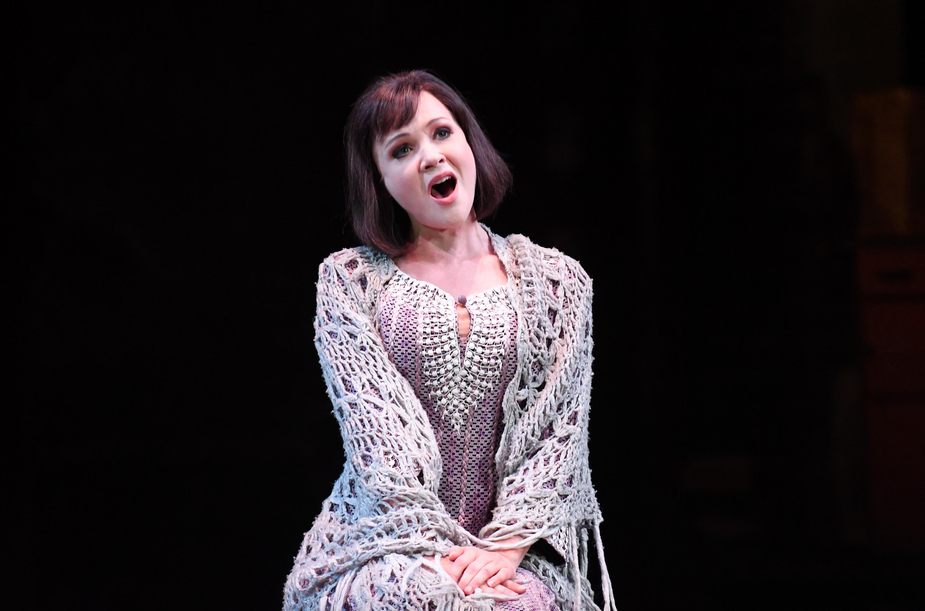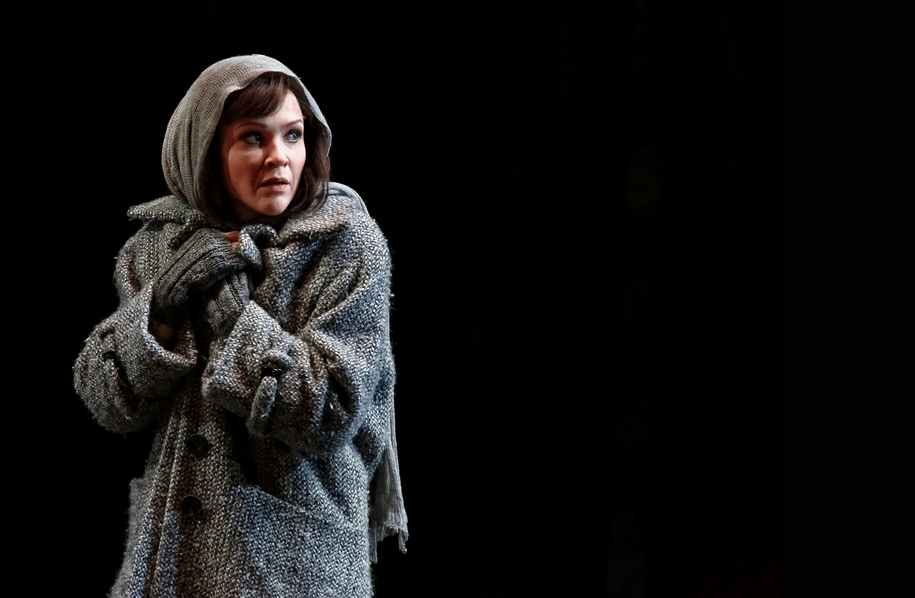Channelling the decadence, glitz and sexual permissiveness of the final months of Weimar Germany, Gale Edwards’ production of La Bohème has become a regular staple of Opera Australia’s repertoire, drawing the ire of those who would like to see more varied programming. But it’s not hard to see why this Bohème has been such a success: a visual feast with fast-paced action, plenty of fun, and, of course, underpinned by Puccini’s well-loved score, it never fails to sell tickets.
But there was another reason for the audience to pack out the Joan Sutherland Theatre last night, ushering in the second cast for the season: the Opera Australia debut (apart from two shows at the beginning of January) of Australian soprano Greta Bradman, singing Mimì in her first role for the company.
 Greta Bradman as MImì in Opera Australia’s La Bohème. Photos © Lindsay Kearney
Greta Bradman as MImì in Opera Australia’s La Bohème. Photos © Lindsay Kearney
She doesn’t disappoint. A bright-eyed, nervous Mimì in the first act, her finely spun soprano blooms and expands, her sound shot through with darker hues. She sings alongside Filipino-American tenor Arthur Espiritu as the poet Rodolfo, whose sound is exquisitely polished and contained – almost delicate – with a fine, burnished sheen.
Espiritu and Bradman make a convincing pair, both exuding a bashful youthfulness. Espiritu’s voice warms in Che Gelida Manina as he sensitively crafts the swells and diminuendos.
There is not a weak link amongst Rodolfo’s housemates, either, who keep the action charging forward with a boisterous energy. Bass-baritone Shane Lowrencev is a flamboyant Schaunard, while bass Richard Anderson is scruffy Colline the philosopher, making the most of the primarily comic role but putting a touchingly absurd amount of feeling into his beautifully sung aria Vecchia Zimara, Senti – his farewell to his favourite coat.
 Andrew Jones, Richard Anderson, Shane Lowrencev, Arthur Espiritu and Greta Bradman in the Café Momus.
Andrew Jones, Richard Anderson, Shane Lowrencev, Arthur Espiritu and Greta Bradman in the Café Momus.
Andrew Jones is stunning as the painter Marcello, his powerful baritone – rich and weighty – moves with an athletic ease and his duet with Bradman in the third act is a highlight.
Soprano Julie Lea Goodwin sparkles as Musetta (as do her costumes, Julie Lynch revelling in the era’s panache), bringing plenty of fire and energy to the role, her self-assured defiance giving way to grief in the finale.
Tenor Graeme Macfarlane – who has been kept busy all season between Bohème, King Roger and Tosca – is a befuddled Benoit, the artists’ drunken landlord, while Tom Hamilton is a comically outraged Alcindoro, embarrassed and sputtering as Goodwin hams up her foot pain in Café Momus.
Brian Thomson’s sets are surely a big part of this production’s success, from the spacious loft whose walls petal out into the second act’s streetscape before revolving to move the action inside the cabaret of Café Momus – the spinning stage allowing for a dizzying saturation of action and movement – to the snow of the toll gate and the final act in which the passage of time is writ large across the loft’s walls. John Rayment’s lighting is colourful and effective – the shifting tones as Rodolfo’s play burns are wonderfully evocative.
Pietro Rizzo leads the Opera Australia Orchestra in a lush, full-bodied reading of the score that, at times, stops just short of engulfing the singers.
While the political undertones in Edwards’ production are subtle, the imminent rise of Nazism casts a pall over even the lighter, glitzier scenes. The pleasure-seeking mood in Café Momus has an air of desperation – the martial music becomes more menacing – and Musetta’s Waltz, which Goodwin delivers with wonderful cabaret-style verve, has a hard edge of loneliness. Marcello’s lines, “Oh, sweet age of false utopias! You hope and believe, and all seems beautiful,” take on a darker resonance and Schaunard, who is extravagantly camp in the first act, has by Act 4 shed that persona for something more subdued, less attention grabbing.
If the intrusion of children and toy salesman (Benjamin Rasheed) into the cabaret seems a tad improbable, the whirl of activity is intoxicating and the OA Chorus and Children’s Chorus hold their own up in the fray.

Bradman shines in the last act, a luminescence to her voice in her final duets with Rodolfo, whose clingy affection, smothering in the third act, is touching in the finale.
Many of the cast are old hands of this production – it seems to be a pretty regular gig for Jones, Anderson, Macfarlane and Lowrencev – but far from coming across stale, the production is a slick, well-oiled machine. And if long-time opera lovers have grown weary of seeing the same production each year, it still has plenty of power to attract new fans. But it’s definitely worth checking out if you want to see what Greta Bradman can do.
Opera Australia’s La Bohème is at the Sydney Opera House until March 24












Comments
Log in to join the conversation.